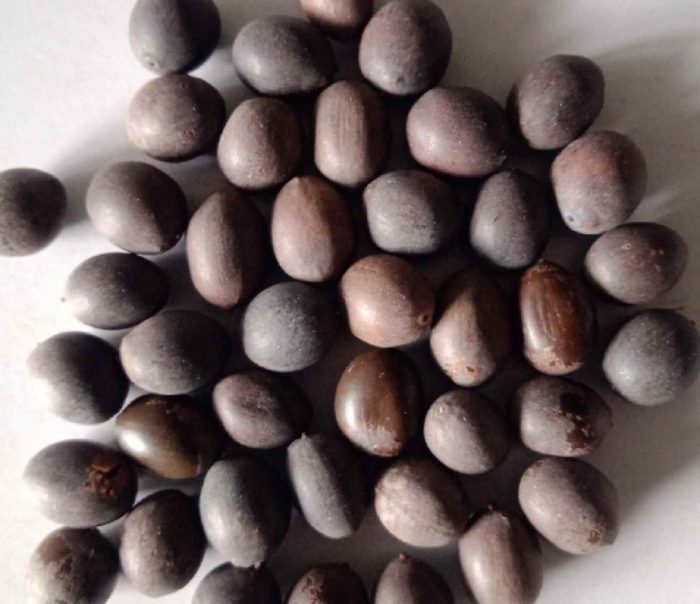Sourcing Lotus Plant Seeds

Lotus plant seeds for sale – Finding the perfect lotus seeds for your water garden can be an exciting but sometimes challenging process. Choosing a reputable supplier is key to ensuring high germination rates and healthy plant growth. Consider factors like seed quality, shipping practices, and customer service when making your selection. This section will guide you through finding reliable sources for your lotus seeds.
Reputable Retailers and Suppliers of Lotus Seeds
Locating reliable sources for lotus seeds is crucial for successful cultivation. Below is a list of online and brick-and-mortar retailers known for offering high-quality seeds and excellent customer service. Remember to always check reviews before placing an order.
- Online Retailers: Many online retailers specialize in aquatic plants and offer a wide selection of lotus seeds, often with detailed descriptions and customer reviews. Look for established businesses with positive feedback.
- Brick-and-Mortar Stores: Local nurseries and garden centers may carry lotus seeds, especially during the appropriate planting season. Visiting a local store allows for in-person inspection of the seeds and provides an opportunity to ask questions of knowledgeable staff.
- Specialty Seed Companies: Several companies focus exclusively on supplying seeds for various plants, including lotus. These often have a wider variety and may offer bulk discounts.
Price and Shipping Comparisons
Pricing and shipping options can significantly influence your decision when purchasing lotus seeds. The following table compares the offerings of three hypothetical suppliers – remember that actual prices and shipping costs can vary depending on location, seed type, and quantity.
| Supplier | Price per Packet (10 seeds) | Shipping Cost (Domestic) | Shipping Time (Domestic) |
|---|---|---|---|
| Supplier A (Example) | $15 | $5 | 3-5 business days |
| Supplier B (Example) | $12 | $8 (free shipping over $50) | 5-7 business days |
| Supplier C (Example) | $18 | $7 (free shipping over $75) | 2-3 business days |
Benefits and Drawbacks of Different Seed Sources
The source of your lotus seeds can significantly impact your gardening success. Purchasing from established online retailers often provides access to a wider variety and detailed product information, but potential drawbacks include longer shipping times and reliance on online reviews. Brick-and-mortar stores offer immediate access and the opportunity for in-person consultation, but their selection might be more limited.
Specialty seed companies may offer higher-quality seeds and bulk discounts but may have higher shipping costs. Consider your priorities (seed quality, price, shipping speed, customer service) when selecting a supplier. Reading customer reviews and comparing prices across multiple sources is always recommended.
Preparing Lotus Seeds for Planting

Getting your lotus seeds ready for planting is crucial for successful germination and a thriving plant. The hard seed coat needs to be weakened or broken to allow water and oxygen to reach the embryo inside, triggering germination. This process, often referred to as scarification, can be achieved through several methods, each with its own pros and cons. Proper handling is also key to avoiding damage to the delicate seed.
Successful germination relies heavily on proper seed preparation. While some lotus seeds may germinate without any pretreatment, scarification significantly increases the chances of a healthy sprout. The methods described below provide different approaches to weakening the seed coat, ultimately facilitating germination.
Methods for Scarifying Lotus Seeds
Several techniques can be used to scarify lotus seeds, each offering unique advantages and disadvantages. The choice of method depends on your available resources and experience level.
- Filing or Sanding: This method involves carefully using a fine file or sandpaper to gently abrade a small portion of the seed coat. The goal is to create a small opening without damaging the embryo inside. This method is precise but requires patience and a steady hand. Advantages: Precise control, minimal risk of seed damage if done carefully.
Disadvantages: Time-consuming, requires skill to avoid damaging the seed.
- Soaking and Nicking: Soaking the seeds in warm water for several days softens the seed coat, making it easier to nick with a sharp knife or needle. A small nick is sufficient; avoid piercing the seed. Advantages: Relatively simple and less technically demanding than filing. Disadvantages: Requires careful attention to avoid damaging the embryo; may not be effective for all seeds.
- Boiling Water Treatment: This involves briefly immersing the seeds in boiling water for a short period, then immediately transferring them to cold water. The rapid temperature change can help crack the seed coat. Advantages: Quick and easy. Disadvantages: Risk of over-processing and damaging the seed if not done precisely. Requires careful timing and monitoring.
Looking for exquisite lotus plant seeds for sale? Then you’re in for a treat! These amazing seeds offer a path to serene beauty, and if you’re feeling adventurous, consider expanding your green horizons by also checking out plant wild trees palia for a different kind of natural wonder. After you’ve explored those options, don’t forget to grab those stunning lotus seeds – they’re the perfect addition to any water garden!
Step-by-Step Guide to Planting Lotus Seeds
Planting lotus seeds involves careful handling and a gentle approach. The following steps Artikel the process, from seed preparation to planting.
- Seed Selection and Preparation: Choose plump, firm seeds without visible cracks or damage. Select your scarification method (see above) and carefully treat the seeds, ensuring you don’t damage the embryo. For example, if using the filing method, gently file a small portion of one end of the seed, exposing a tiny bit of the inner seed. This allows water penetration without compromising the seed’s integrity.
- Soaking: After scarification, soak the seeds in a bowl of lukewarm water for 24-48 hours. This helps further soften the seed coat and initiates the germination process. Imagine the seed absorbing water like a sponge, swelling and preparing for growth.
- Planting Medium: Use a pot with drainage holes filled with a rich, well-draining potting mix. A mix of potting soil and perlite or vermiculite works well. This ensures adequate drainage to prevent root rot, a common problem for lotus plants.
- Planting: Plant the seeds about 1-2 inches deep in the potting mix, pointed end up. Gently cover the seeds with soil. This depth provides enough protection while allowing the sprout to easily reach the surface.
- Watering and Placement: Water the pot thoroughly, keeping the soil consistently moist but not waterlogged. Place the pot in a sunny location with at least 6 hours of direct sunlight per day. Sunlight is essential for photosynthesis and healthy plant growth.
Growing Lotus Plants from Seed: Lotus Plant Seeds For Sale

Growing lotus plants from seed can be a rewarding experience, offering a unique connection to the plant’s life cycle. Successfully cultivating these beautiful aquatic plants requires understanding the different methods available and carefully managing their environmental needs. The choice between direct sowing and starting seeds indoors significantly impacts the timing and success of your lotus cultivation.
Methods for Growing Lotus from Seed
The two primary methods for growing lotus from seeds are direct sowing into a pond or water garden and starting seeds indoors before transplanting. Each method presents advantages and disadvantages.
- Direct Sowing: This method involves planting seeds directly into their final growing location, typically a pond or water garden. It’s simpler, requiring less initial effort, but success depends heavily on environmental conditions and may result in lower germination rates due to unpredictable weather and potential predation. It’s best suited for warmer climates with consistent temperatures.
- Starting Seeds Indoors: This approach offers more control over the germination process. Seeds are started in containers indoors under controlled conditions, allowing for higher germination rates and stronger seedlings before transplanting to their final location. This method is ideal for colder climates or when precise timing is crucial, but it requires more initial effort and resources.
Planting Lotus Seeds in Containers
Starting seeds indoors in containers provides a controlled environment to encourage germination and seedling growth. Choose a container that is at least 6 inches deep and wide to accommodate the developing root system. A pot with drainage holes is recommended to prevent waterlogging.
- Soaking the Seeds: Begin by gently scrubbing the hard seed coat with sandpaper or a file to slightly nick the surface. This helps to break the dormancy and improve water absorption. Soak the seeds in warm water for 24-48 hours or until they begin to swell.
- Preparing the Planting Medium: Use a well-draining potting mix suitable for aquatic plants. A mix of potting soil and perlite or vermiculite is ideal. Fill the container, leaving about an inch of space from the top.
- Planting the Seeds: Place the soaked seeds about 1-2 inches deep in the potting mix. Cover the container with a clear plastic lid or bag to maintain humidity. Place the container in a warm, sunny location.
- Germination and Growth: Germination typically takes several weeks to months. Keep the soil moist but not waterlogged. Once the seedlings have several leaves, they can be gradually acclimated to outdoor conditions before transplanting to a pond or larger container.
Planting Lotus Seeds Directly into Ponds or Water Gardens
Direct sowing offers a more natural approach, but requires warmer temperatures and careful site selection.
- Site Selection: Choose a location in your pond or water garden that receives at least 6 hours of sunlight daily. The water depth should be at least 1-2 feet deep, depending on the lotus variety.
- Soil Preparation: Lotus plants require nutrient-rich soil. Place a layer of rich, loamy soil or a specialized aquatic planting mix in a container or directly in the pond bottom, ensuring it’s deep enough to accommodate the roots.
- Planting the Seeds: Plant the pre-soaked seeds directly into the prepared soil, covering them with about 1-2 inches of soil. You can use a small pot to contain the soil and prevent it from washing away.
- Water Management: Ensure the water level is maintained to cover the soil and provide adequate hydration. Avoid excessive water fluctuations, as this can disrupt the growth.
Creating Optimal Growing Conditions, Lotus plant seeds for sale
Successful lotus cultivation depends heavily on providing the right environment.
- Containers: Choose large containers (at least 12 inches in diameter and depth) with drainage holes to prevent waterlogging. Plastic or ceramic pots work well. For smaller containers, more frequent watering and fertilization may be necessary.
- Soil Mixtures: Use a rich, loamy soil mix amended with compost or other organic matter. Avoid using heavy clay soils, which can impede drainage and root growth. A blend of potting soil and perlite or vermiculite provides excellent drainage and aeration.
- Water Management: Maintain a consistent water level, avoiding drastic changes. The water should be relatively still, with minimal current. Regularly check the water quality and replenish as needed, especially in containers. Stagnant water can lead to algae blooms and disease.
Question & Answer Hub
How long does it take for lotus seeds to germinate?
Germination time varies depending on the variety and preparation method, but it can range from a few weeks to several months.
Can I grow lotus plants in a container?
Absolutely! Containers are a great option, especially for smaller spaces. Choose a large container with ample depth and drainage holes.
What should I do if my lotus plant shows signs of disease?
Identify the disease and consult a gardening resource or expert for appropriate treatment. Good sanitation and preventative measures are key.
How often should I fertilize my lotus plants?
Lotus plants generally don’t require heavy fertilization. A slow-release aquatic fertilizer applied once or twice during the growing season is usually sufficient.
Where can I find more information on lotus plant care?
Numerous online resources, gardening books, and local gardening clubs can provide further information and support.
